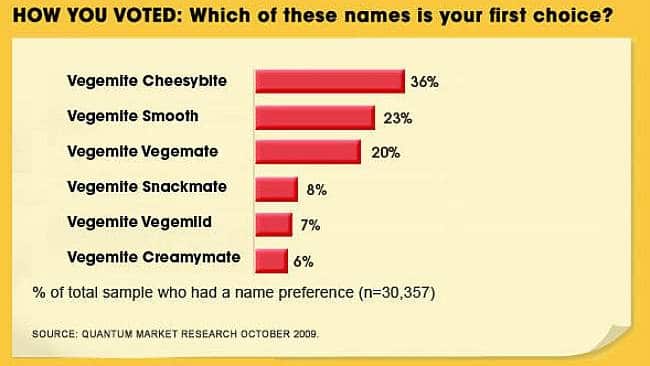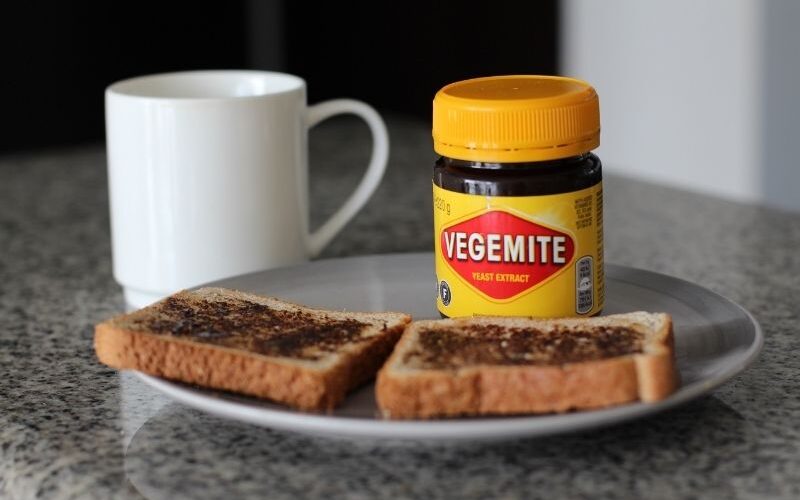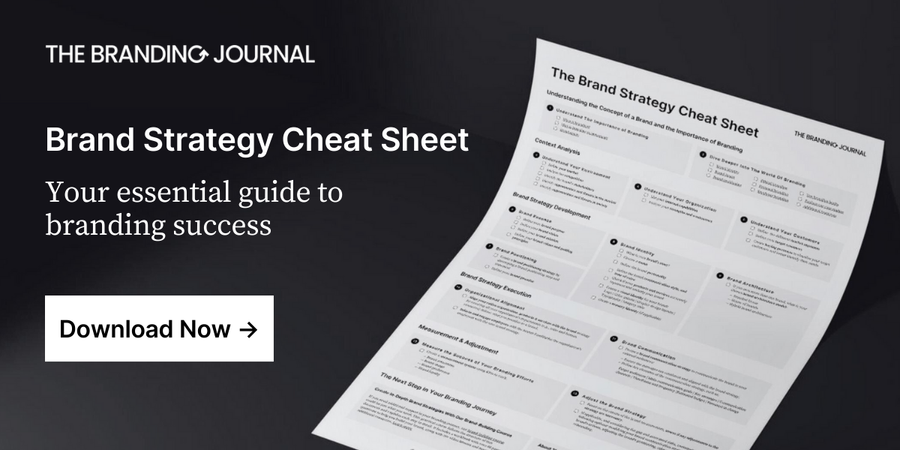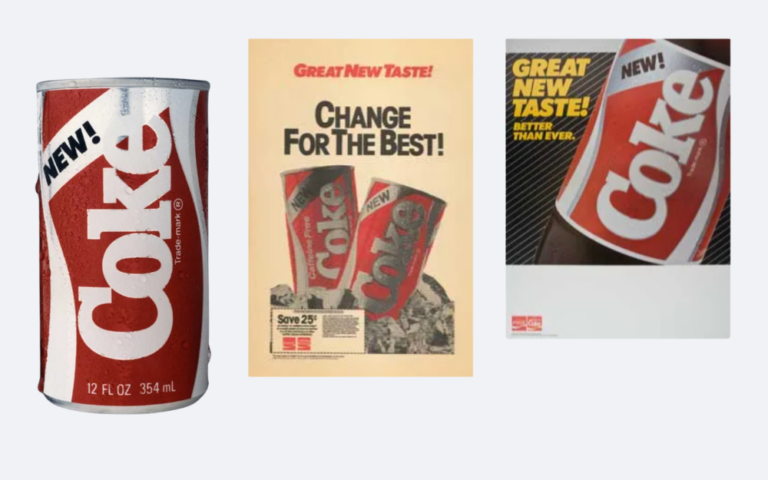Vegemite, one of the most popular savory spread brands from Australia, unveiled a product extension in 2009. Both the media and consumers criticized the new product’s name (iSnack 2.0), and the outrage hit the headlines all over the world that year. The company was unprepared for the anger and was forced to change the new product’s name.
How a company so customer-focused could get this so wrong (and so publicly wrong) was a shock to everyone – but there are lessons to be learned, and from a branding perspective, there are some elements that were intentionally part of a well-informed strategy.
Proven Systems for Business Owners, Marketers, and Agencies
→ Our mini-course helps you audit and refine an existing brand in 15 days, just 15 minutes a day.
→ The Ultimate Brand Building System is your step-by-step blueprint to building and scaling powerful brands from scratch.
Table of Contents
Background: The Aussie brand
Vegemite is a salty spread made out of yeast extract. It is a nutritious product, one of the richest known sources of Vitamin B. The brand is a leader for Kraft foods (alongside Philadelphia Cream Cheese) and has long been an iconic breakfast spread for Australians, but also a brand leader across the globe according to IBM’s brand index.
It has its own story to tell, and for Australians, they have built it into a big part of their culture.
But Vegemite had also not changed as a brand in decades. We all know that people don’t like change, but it is vital for brands to continue to evolve, even if ever so slightly. Even changing your marketing and approach to selling to your target audience can help. But Vegemite kept everything the same.
So when sales started to fall (Vegemite household penetration had fallen from 80% to 72%), you can understand the apprehension of now wanting to change a brand to try and turn it around.
The challenge: An iconic brand in decline

For Simon Talbot, Kraft’s Head of Corporate Affairs, sales had been declining for over five years, market share was dropping by almost 10%, and of course, for any company in this situation, something had to be done.
Some explanations to this decline are:
- There was a recognition that Vegemite didn’t need to be purchased every week, with a family’s weekly shop. Because of its creation and ingredients, it had no expiry date, which meant an everlasting shelf life.
- Some people said it was because people had less time for breakfast in the morning, and Vegemite was not the best “grab and go” breakfast solution.
- Australian households were getting smaller
- There was an increasing number of immigrants who were not familiar with the product.
- The company’s marketing team also did not get away unscathed. Because the product and the brand had been so successful, there was no need for innovation, entrepreneurialism, or creativity in their communications. They didn’t look to target any other audiences. For Kraft, with this brand and product, it was as if time stood still.
Talbot, understood that he needed to do something with the aging brand. The main idea was to get some consumers’ insights to launch a new product that would boost sales.
The Strategy
Social listening
For Talbot, at the beginning, it was simple. He felt that, as a company, they needed to get closer to their consumers in order to understand what they expected from Vegemite. Kraft searched for valuable insights to develop a potential Vegemite product extension.
Working alongside IBM and its COBRA system, Kraft undertook a Social Listening strategy and started to gain some insights into what their customers were talking about. Not only that, they were able to tap into what visitors to the country were also talking about.
The findings of this market research
This social media market research allowed the brand to understand the following:
- Consumers needed to feel connected to the product
- Consumers loved to personalize how they consumed their Vegemite
- Consumers spread their Vegemite over other foods (avocado, butter, Kraft’s Philadelphia cheese, cheese, tomatoes, etc)
- Consumers mainly associate the brand with words such as “Australia”, “breakfast”, and “toast”
- Expatriates were significant online influencers that were actively mentioning Vegemite in their messages.
This intelligence provided all of the brand information the team needed to focus their efforts on a hard-hitting campaign that embodied everything that people loved about the Vegemite brand and product.
But perhaps the most valuable insight was the identification of 32 different ways people consume their Vegemite, which reflected how consumers enjoyed having their unique way of eating the iconic product. This inspired the marketing team to create a new campaign.
The “How do you like your Vegemite” campaign was born, and to be honest, it was one of the most successful to date.
The communications campaign: “How do you like your vegemite?”

The objective of this campaign was to satisfy the need to connect with the product by giving consumers the power to share their thoughts and opinions about their Vegemite consumption. The marketing campaign included TV, print, OOH, PR, and social media communications across the country.
The campaign was a great success, with over 300,000 submissions and plenty of new insights into the product’s consumption.
One step further – the product extension
Due to the success of the marketing campaign, Kraft Foods decided to take this one step further and offer consumers an alternative product — a product extension.
They found that people were consuming Vegemite with other tastes — even more so, some Moms were using it with their other popular brand, Philadelphia Cream Cheese, to dilute the bitter taste and give it to their children. This new way of consumption made it “dip-able” and transformed it into a snack.
This insight encouraged the brand to move from breakfast to snacks. Snacks can happen at any time. You’re on the go. This strategy would allow the team to boost the product’s sales by creating a new way of consuming it. When they looked at the idea of creating a snack out of the product (a mixture of Kraft’s Vegemite and Kraft’s Philadelphia cream cheese), there was a market for this.
Kraft Foods developed the new snack product in record-breaking time, not losing momentum on their marketing strategy success. To continue the customer engagement theme and to help with their brand extension, they launched their new product with no name. They wanted to keep the bond with their customers that they had created. So when the new product first hit the shelves, it was simply labeled “name me.”
One step too far – the new product’s name: iSnack 2.0
This was a great strategy as they involved the customer from the start. It was an excellent marketing tool that created engagement and excitement, and because the loyalty was already with the brand, they had the “right” almost to try out new things and venture into new markets.
But, there is, of course, a huge problem with this strategy. The name that was eventually chosen did not fit with their current brand and the image that they’d created and held for so long.
The most popular name suggested by consumers was “Cheesymite”; however, Kraft wanted something that would reflect the “snacking” element to differentiate it from the classic Vegemite. Another name suggested by consumers was “iSpread 2.0” and the brand decided to twist it and name it “iSnack 2.0”, with:
- “i” reflecting the idea of personalized consumption
- “snack” to answer the need for some people to consume the product as a snack
- “2.0” reflecting that the new product is the first new version of the classic Vegemite

All of a sudden, the brand product extension caused a media storm, and for days, iSnack 2.0 was making headlines across the globe.
It was frowned upon because it sounded like a technical product, didn’t fit with their heritage, and for a marketing team that assumed the much more modern name would resonate with their newly targeted audience—their loyal customer audience was too strong not to be heard.


Within a week, Simon Talbot commented to the BBC in 2009, “We have been overwhelmed by the passion for Vegemite and the new product. The new name has simply not resonated with Australians.”
iSnack 2.0 was quickly changed to “Cheesybite” – after a poll was carried out online for consumers to choose their new favorite name.
Lessons to be learned
1. Never stand still
As a brand, never believe that you can stay in one place for too long. Things change every second of every day, and standing still allows someone else to move in front of you.
2. Listen to your consumers
Kraft Foods had customer engagement; their marketing campaign showed that. They listened to their customers in their “How do you like your Vegemite” campaign, but then, looking for the same connection for their product extension, they stopped listening.
The most popular name suggested by consumers was “Cheesymite”, very similar to the final name: “Cheesybite”, not “iSnack 2.0”. It’s interesting to let the public decide on the new name, but you should listen to them and choose what they recommend.
3. Test the market first
Kraft let their online audience choose their new name, but what they didn’t check was to make sure it would resonate with the entire target audience.
This is where market testing is a must for any brand when it comes to product extensions. Yes, it is going to be targeted at a new consumer audience, but to still have a strong affiliation with the original brand, it has to be accepted by the original audience, too.
4. Product extensions have to “fit” with the current image of the original brand
Launching a new product was a great way to reinvigorate the brand. But when you refresh a brand through a new product, you never throw everything out. There are some elements you need to keep to enable the customer to link the two and have the same connection. Unfortunately, with iSnack 2.0, this didn’t happen. It was seen as a completely different brand with no association, and so, of course, it was never going to be able to piggyback on the success of Vegemite.
5. Take your time
You also don’t have to jump straight away just because social media is going crazy. It seems like an absurd thing to say, but because of social media, reactions are much quicker now especially knee-jerk reactions.
The company soon changed the name due to customer demand (and it seems that was the right decision to make) but it also has to be recognised in that week of media hell, the company was still selling iSnack 2.0 and quite a lot of it. So they had to weigh up the pros and cons. Was the increase in sales due to a rush to see what it was like due to all of the media attention, or did the name actually resonate with the younger generation they were aiming for?
You need to be ready for the PR but your strategy should be well thought out before making any hasty decisions. This is your brand and your reputation, and sometimes you simply have to take a step back from it all before you can move forward again.
Conclusion
The iSnack 2.0 product extension shows the power of customer engagement. Listening to and, more importantly, understanding your customers can have a hugely positive impact on your new product launches.
Vegemite proved that they were great listeners in the beginning (social media listening, “how do you like your Vegemite campaign,” “name me” campaign) until they chose the new name — a name that wasn’t suggested by their audience. Vegemite should have listened to the customer until the end to ensure a smoother acceptance of the new product!
References:
-Keinan, A., Farrely, F. and Beverland , M. (2011) ‘Introducing iSnack 2.0: The New Vegemite’, Harvard Business School N9-512020 (Academic Article)
-Food MarketWatch (2009)’Rebranding Case Studies’ (Datamonitor)
-Food MarketWatch (2009) ‘Kraft pulls iSnack 2.0 name after backlash, but publicity may have done more good than harm (Datamonitor)










I have my sincere doubts that the name impressed anybody under the age of 60.
‘Vegemite iSnack 2.0’ comes across to me as a very cliché example of someone superbly out of touch trying to appeal to today’s youth.
Very old article I know, but ‘Vegemite iSnack 2.0’ was part of the strategy to generate interest, news media, conversations, outrage, everything.
And the industry still thinks it was a bust.
It was brilliant strategy. I was there.
They have made this blunder before! You didn’t mention ‘PARWILL’ – I.e. Marmite but Parwill!
https://www.urbandictionary.com/define.php?term=Parwill
Very interesting; thanks a lot for sharing this case! We will look into it :)
What I got from this article was that IBM and people from Kraft were ‘listening / reading into peoples private messages. Now to me THAT seems to be a more important question ti be asking – who the F*#* gave them permission to take that privilage?
Hi Susan, thanks a lot for your comment! There is no mention of IBM/Kraft reading private messages. I’m sharing with you the exact quote from the Harvard Business Review article, for more details:
“Vegemite’s Social Media Market Research
Kraft ANZ were to become a leader in social media so a decision was taken to enlist the services of IBM and its COBRA system (Corporate, Reputation and Brand Analysis) and to embark on Australia’s largest branded social media engagement. This system used algorithms and sophisticated pattern analysis to mine consumer content on the Internet (refer Exhibit 3). The system could generate thousands and thousands of brand related mentions on the web and establish a small number of popular brand associations.”